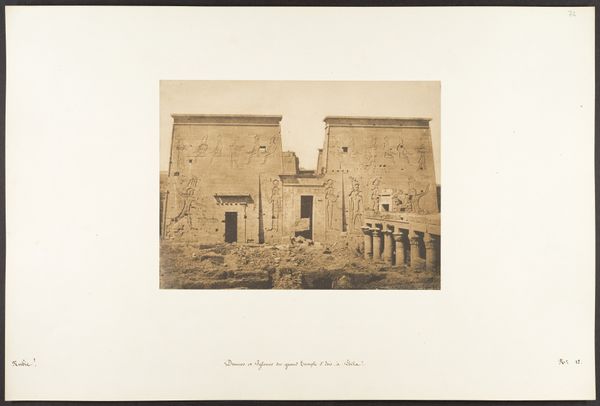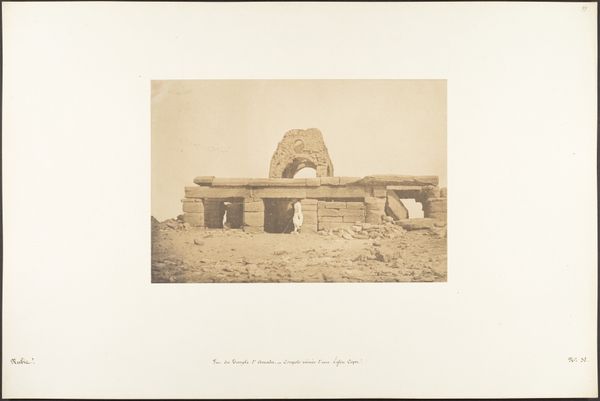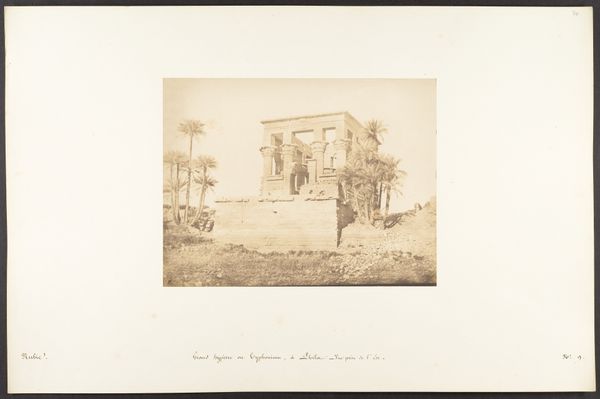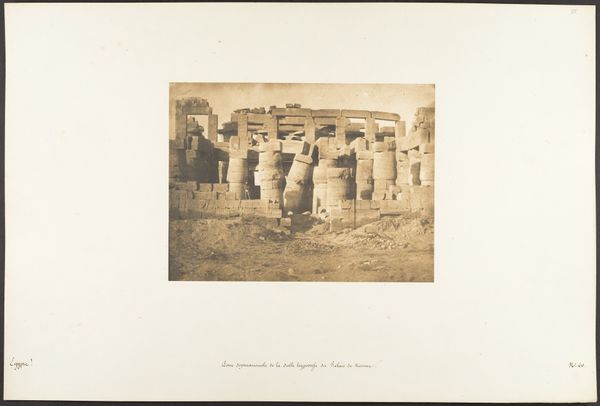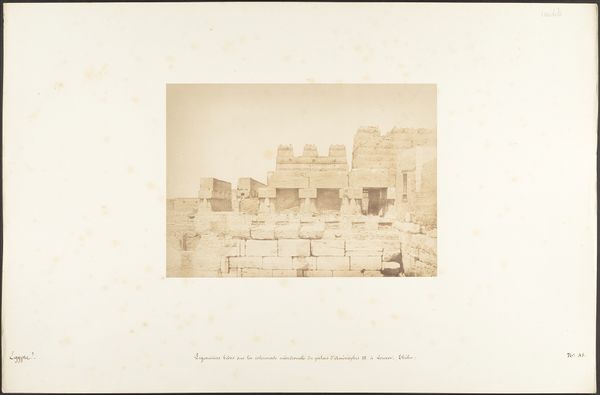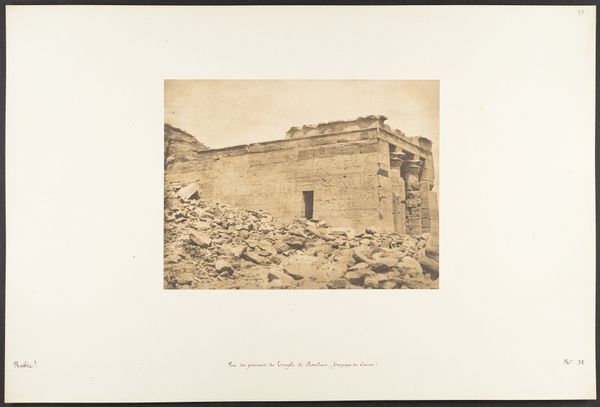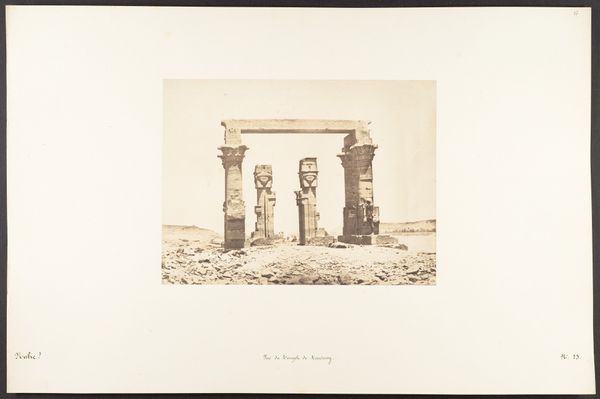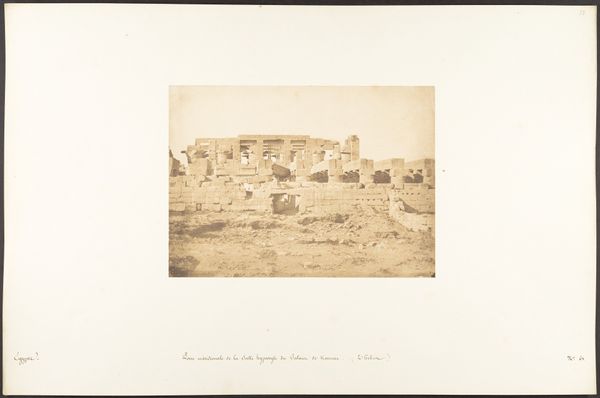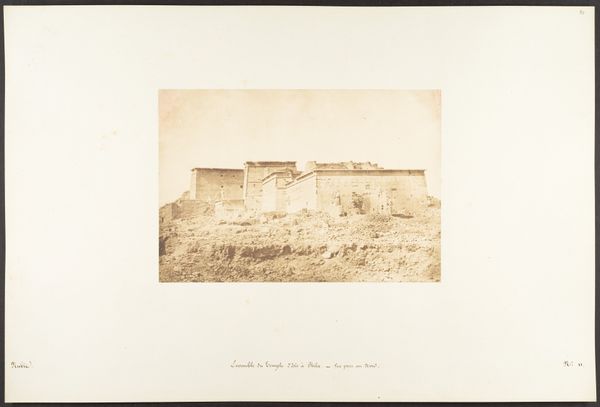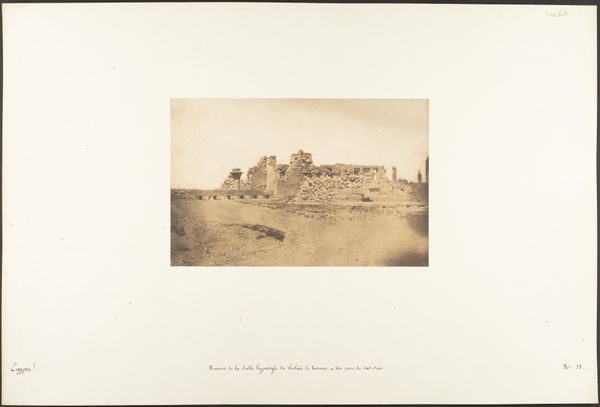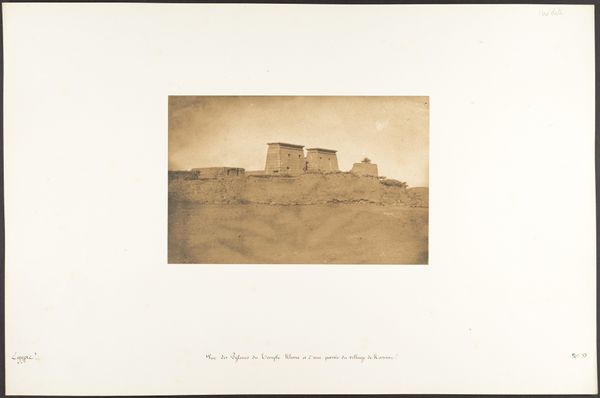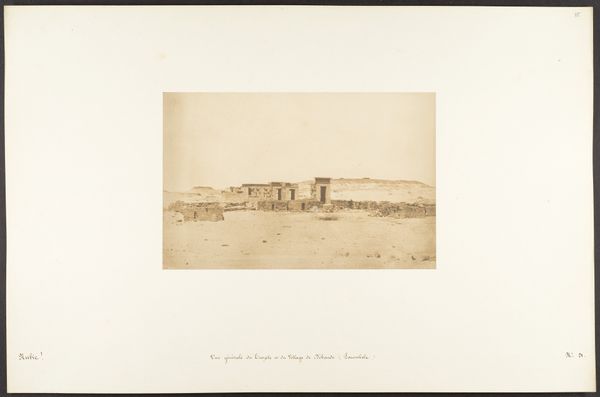
photography, architecture
#
landscape
#
photography
#
ancient-mediterranean
#
architecture
Dimensions: Image: 6 3/16 × 8 3/4 in. (15.7 × 22.2 cm) Image: 8 7/8 × 6 9/16 in. (22.5 × 16.7 cm) Mount: 18 11/16 × 12 5/16 in. (47.5 × 31.2 cm)
Copyright: Public Domain
Editor: So, this is Maxime Du Camp's "Vue du Temple de Maharakka (Hiéra-Sycaminos)," a photograph from 1850. It depicts an ancient temple, but it's in ruins. It evokes a sense of faded grandeur and the relentless passage of time. What do you make of this? Curator: I'm drawn to the layers of time embedded within this image. Du Camp’s photograph is not just a record; it's a meditation on memory. The temple itself, even in its ruined state, speaks to the aspirations and beliefs of a civilization. But what does its state of ruin suggest? Editor: Decline? Loss? Maybe a reminder of impermanence? Curator: Precisely. Consider the cultural memory tied to such a structure. Temples weren’t merely buildings; they were conduits to the divine, physical manifestations of faith and power. Now imagine that eroded, fragmented, accessible. How does that contrast alter its meaning? The photograph itself freezes this transitional state, doesn’t it? Editor: It does. The photographic medium emphasizes the 'realness' of the ruin. It's almost a document of cultural trauma. I'm now noticing that there is more than one temple within the image. Does that suggest any particular historical perspective on, or association between, such buildings? Curator: Perhaps consider how the placement of each temple may communicate particular status or hierarchy. Or could it indicate separate cultural associations altogether? The photographer has made certain deliberate choices, what statement are they making by positioning those architectural entities side by side in that photograph? Editor: Fascinating. I never considered the intentionality behind highlighting both those places, side by side, at the same time. I see so many historical perspectives and visual contexts that I didn't catch at first glance. Curator: And Du Camp's role adds another layer. He captures a moment where one culture's monuments are observed by another. A kind of cultural echo chamber.
Comments
No comments
Be the first to comment and join the conversation on the ultimate creative platform.
